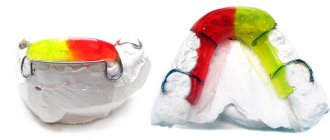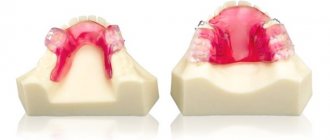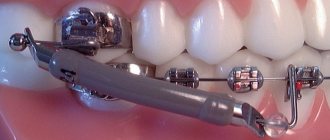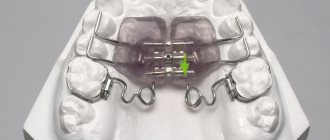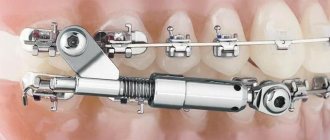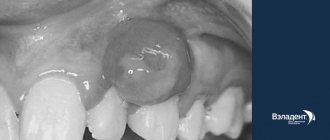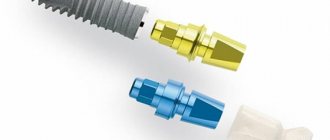The Optodan laser device is reliable, simple, convenient and safe to use. Small dimensions and weight allow it to be used at home or at the bedside of bedridden patients. The capabilities of the Optodan laser device are indispensable when providing medical care to weakened children. Laser light not only fights a specific disease, but also has a beneficial effect on the immune system.
Treatment methods using the Optodan device are based on the mechanism of multifactorial action of infrared laser light generated in a pulsed mode. The Optodan laser device has a resonant effect on the cells of the body, activates and stimulates the functional activity of vital processes, which leads to an increase of up to 30% in the effectiveness of laser therapy. In some cases, the therapeutic effect is solely a consequence of cellular-systemic resonance.
Mechanism of therapeutic action
- Pronounced anti-inflammatory and analgesic effect;
- Improving microcirculation, normalizing the permeability of vascular walls, thrombolytic effect;
- Normalization of metabolic processes, increasing oxygen levels in tissues;
- Significantly accelerates the regeneration of soft and bone tissues, preventing the formation of scars;
- Stimulation of the immunological defense system;
- Reducing the pathogenicity of pathogenic microflora, increasing its sensitivity to antibiotics.
Treatment of dental cysts
A dental cyst is a pathology that does not always lead to tooth extraction. In fact, deletion is a last resort. And with a professional approach, according to our many years of experience, in 1 out of 3 cases the tooth can be saved!
A dental cyst is an infectious disease of the oral cavity in which a new formation appears in the bone tissue of the jaw, filled with fluid and sometimes pus. The problem may appear due to dental trauma, untreated caries or pulpitis, unsuccessful extraction, or weakened immunity. The disease is quite common.
We are focused on preserving the tooth and always study the problem from this position. The treatment method is selected individually - at a joint consultation between the surgeon and the endodontist.
For high-quality diagnostics and precise treatment, the Sanitas clinic uses a high-quality New Tom computed tomograph and dental microscopes.
Indications for use
To speed up the rehabilitation of patients after surgery, fractures and severe injuries, to exclude purulent complications. With fractures, the rate of callus growth more than doubles, including in older people. The device is highly effective in treating injuries resulting from crushing or squeezing.
For the prevention of venous thromboembolic complications (VTEC) after operations on the lower extremities (hip and knee replacement, metal osteosynthesis of the femur and high limb amputation).
The characteristics of the “Optodan” device provide the basic requirements for preparing athletes for competitions and effectively eliminating the consequences of minor injuries. The use of the Optodan laser device eliminates problems associated with doping control.
For the prevention and treatment of caries in the stage of demineralization and chalk spots, pulpitis, periodontitis, periodontal diseases and oral mucosa, inflammatory diseases of the salivary glands, lymphadenitis, osteomyelitis, etc.
For the treatment of hemorrhoids and rectal fissures (as the main remedy).
In cosmetology, the laser therapeutic device “Optodan” is used both independently and in combination with other means. Preliminary application of cream or other active substance enhances its absorption into the skin (laser phoresis).
"Optodan" is used for:
- Elimination of skin irritation and inflammation after hygienic facial cleansing;
- Prevention of skin aging and the appearance of wrinkles, elimination of dryness and sagging skin, increasing its firmness and elasticity;
- Treatment of pyoderma, furunculosis;
- Accelerating wound healing and preventing scar formation after acne, mole removal, after plastic surgery;
- Treatment of acne and oily skin.
For prevention and treatment:
- Arthrosis, arthritis, osteochondrosis;
- Rhinitis, tonsillitis, sinusitis, tonsillitis, otitis;
- Neuralgia;
- Myocardial infarction, ischemic disease;
- Hypertension;
- Mastitis, prostatitis;
- Hard-to-heal wounds and ulcers, bedsores.
The laser device Optodan “Dentist” is intended for:
— Medium and deep caries in the stage of demineralization; — Pulpitis and periodontitis; — Periodontal diseases – gingivitis, periodontitis; — Diseases of the oral mucosa; — Alveolitis and periostitis; — Naminov after applying prostheses; — Complications in orthodontics, prosthetic dentistry and implantology.
Country of origin: Russia
The Optodan laser device is used for prevention purposes, as well as in the treatment of caries at the stage of chalk spots and demineralization, periodontitis, pulpitis, diseases of the oral mucosa and periodontal disease, inflammation of the salivary glands, osteomyelitis, lymphadenitis and a number of other pathologies.
Methods of use
The surface irradiation method is used when affecting the affected surface of the skin (open wound, burn, purulent process, etc.). When irradiating the affected surface, the window of the emitting unit of the device is directed to the lesion at an angle of 90°, at a distance of 5 - 7 mm from its surface. The divergence angle of the laser beam is 36°. Deviation of the laser beam axis from a right angle leads to an increase in the reflection of light energy from the irradiated surface, especially if ointments, gels, etc. were used. The manipulator is moved in a circular motion clockwise over the surface of the wound in the direction from its periphery to the center. If the wound is extensive, then its surface is conventionally divided into fields of 4 - 6 cm2 and each field is irradiated sequentially. The surface of the wound can be irradiated through a gauze bandage no more than three layers thick.
The projection irradiation method is used when it is necessary to expose objects of internal pathology to laser light. In this case, the window of the emitting unit of the “Optodan” apparatus is directed to the projection, for example, of the joint space (arthritis, arthrosis), palatine tonsils (angina) or internal injuries (postoperative, post-traumatic rehabilitation). During projection irradiation, the tip of the manipulator may come into contact with the skin.
The method of non-invasive (percutaneous) blood irradiation stimulates the immune system, has a desensitizing effect, and increases the sensitivity of pathogenic microflora to antibiotics. With non-invasive blood irradiation, the tip of the manipulator is directed to any large vein at the place of its closest approach to the surface of the body. The main indications for blood irradiation are decreased immunity after illness, purulent-inflammatory diseases, burns, etc.
The method of laser reflexology refers to systemic methods of influencing the body’s self-regulation mechanism. The area of influence is reflexogenic zones and points. To conduct a laser reflexology session, a specialized attachment is attached to the “Optodan” device (* on request).
| Scattering nozzle (periodontal) | 1140 rub. |
| Magnetic attachment | 708 rub. |
| Zone nozzle | 744 rub. |
PACKAGE:
Cardboard box. Overall dimensions 235x160x90 mm, weight - 1 kg.
The safety level of laser radiation belongs to class 1 according to “Sanitary standards and rules for the design and operation of lasers” No. 5804-91 and GOST R 50723-94, and does not require special protective measures.
Safety and ease of handling make it possible to carry out procedures not only in specialized hospital rooms, but also in hospital wards at the bedside of bedridden patients and at home.
The design of the OPTODAN device, in contrast to well-known analogues, provides a sharp rise and fall edge of the output optical pulses. Essentially, this determines the pulse mode of operation of the device, bringing the shape of the optical pulse closer to rectangular. A sharp front of growth of the optical pulse at certain frequencies provides a mechanism for the resonant effect on the cell as a biosystem with its own frequencies of vital activity. The resonance effect significantly activates the functions of cell organelles and membrane complexes, and also stimulates the functional activity of vital processes in the body. In practice, this leads to an increase (up to 30%) in the effectiveness of treatment, and in some cases the therapeutic effect is a consequence of cellular-systemic resonance.
The frequency modes of operation of the “OPTODAN” device (mode I , mode II ) are selected,
taking into account the stage of the pathological process. During the period of inflammation, which manifests itself in disruption of microcirculation and tissue metabolism, the development of congestion, edema, pain, etc. Mode I is used. Frequency mode II is used to stimulate regeneration processes.
Treatment methods using the OPTODAN device are based on the mechanism of multifactorial action of infrared laser light generated in a pulsed mode.
Surface irradiation method
used when it is necessary to influence the affected surface of the skin (open wound, burn, purulent process, etc.). When irradiating the affected surface, the window of the emitting unit of the OPTODAN device is directed directly to the lesion at an angle of 90°. To avoid contact with an open wound or ulcer, the tip of the manipulator is held at a distance of 5 - 7 mm from its surface. The manipulator is moved in a circular motion clockwise over the surface of the wound in the direction from its periphery to the center to completely cover the entire affected surface with the laser beam, capturing healthy tissue. If the wound is extensive, then its surface is conventionally divided into fields of 4 - 6 cm2 and each field is irradiated sequentially.
Deviation of the laser beam axis from a right angle leads to an increase in the reflection of light energy from the irradiated surface, especially if ointments, gels, etc. were used.
The divergence angle of the laser beam is 36°.
The surface of the wound can be irradiated through a gauze bandage no more than three layers thick.
Projection irradiation method
used when it is necessary to expose elements of internal pathology to laser light. In this case, the window of the emitting unit of the “OPTODAN” device is directed to the projection, for example, of the joint space (arthritis, arthrosis), palatine tonsils (angina) or internal injuries (postoperative, post-traumatic rehabilitation). During projection irradiation, the tip of the manipulator may come into contact with the skin.
Non-invasive (percutaneous) irradiation of the blood stimulates the immune system, has a desensitizing effect, and increases the sensitivity of pathogenic microflora to antibiotics.
With non-invasive blood irradiation, the tip of the manipulator is directed to any large vein at the place of its closest approach to the surface of the body. The main indications for blood irradiation are decreased immunity after illness, purulent-inflammatory diseases, burns, etc.
Laser reflexology method
refers to systemic methods of influencing the body’s self-regulation mechanism. The area of influence is reflexogenic zones and points. To conduct a laser reflexology session, a specialized attachment is attached to the OPTODAN device *(not included in the standard package).
Laser therapy is carried out in courses of up to 15 procedures. It is not advisable to carry out a larger number of procedures, due to a decrease in the body’s susceptibility. Studies have shown that it is optimal to carry out two or three courses of 12 procedures with a break of one month. The positive effect of laser therapy appears after 3 to 5 procedures, but can also occur after completion of the course. For chronic diseases, it is necessary to carry out preventive courses of laser therapy during the period of possible exacerbation, usually in spring and autumn. The frequency of procedures and the duration of the procedure depend on the disease and method of treatment.
Laser light increases the effectiveness of analgesics and antibiotics. If external agents (ointments, cosmetic creams, gels, etc.) were used before a laser therapy session, then the depth of penetration of the drugs into the tissue increases.
The effectiveness of treatment is assessed using clinical and subjective indicators.
Contraindications to laser therapy
are:
- blood diseases;
- diseases of the nervous system with sharply increased excitability;
- severe diabetes mellitus in the stage of decompensation;
- hyperthyroidism;
— severe degree of pulmonary emphysema;
- functional kidney failure;
- tumors benign and malignant.
Individual hypersensitivity of the body to laser radiation is possible, which is very rare and manifests itself after the first procedure in the form of muscle weakness and increased pain. These ailments are not a contraindication to laser therapy and disappear after a one-day break. To continue treatment, the irradiation time (exposure) should be reduced based on subjective sensations. If the effect of laser therapy is not achieved, then you should switch to alternative treatment methods. In case of exacerbation of the disease, which can occur after 3-5 procedures, it is recommended to take a break for 1-2 days and then continue the course.
The total time of laser light irradiation during one procedure should not exceed 30 minutes.
Laser therapy can be used as an independent treatment procedure, or in combination with generally accepted methods of conservative (medication), surgical and other methods of treatment, including physiotherapy (magnetic field, ultrasound, etc.).
In the treatment of traumatic and postoperative wounds, trophic ulcers, burns, purulent diseases and complications, the entire mechanism of the multifactorial therapeutic effect of low-intensity laser light on the site of pathology is effectively activated.
Indications for use:
- SURGERY, TRAUMATOLOGY
— fresh and postoperative wounds;
— wounds after opening purulent abscesses and mastitis;
- trophic ulcers of the lower extremities;
— purulent diseases (abscesses, boils, carbuncles, postoperative scar infiltrates);
— chronic thrombophlebitis of the veins of the lower extremities;
— diseases and traumatic injuries of the muscular-ligamentous apparatus (myositis, bursitis, etc.);
- bone fractures;
- burns.
Private methods of treating these diseases are based on the use of various methods of laser therapy and their combination. Depending on the stage of the pathological process, various frequency modes of the OPTODAN device are used .
The inflammatory process, which is accompanied by pain, swelling, and the development of congestion, is stopped by using
mode I
mode II
is used during the regeneration period .
- PAIN SYNDROME, POST-TRAUMATIC AND POSTOPERATIVE REHABILITATION
The use of the OPTODAN device is most effective in relieving acute pain of an inflammatory and traumatic nature, muscle pain, pain in the joints and spine, headaches and toothaches. It should be borne in mind that pain may be a harbinger of any disease and the removal or reduction of sensations may be temporary. In this case, as with long-term and chronic pain, it is necessary to establish (diagnose) the cause of pain and begin complex treatment of the disease.
When treating pain of an inflammatory or traumatic nature, as well as muscle pain, methods of superficial and projection irradiation are used.
- DISEASES OF THE MUSCULOCAL SYSTEM
Treatment of diseases of the musculoskeletal system is based not only on the impact of low-intensity laser light on the pathological focus, but also on reflexogenic zones that regulate the functions of diseased organs.
- ENT DISEASES
- SKIN DISEASES
- DISEASES OF THE LUNGS AND BRONCHES
- UROLOGICAL AND PROCTOLOGICAL DISEASES
- TRIGEMINAL NEURALGIA
Neuralgia is characterized by severe pain along the nerve. The causes of neuralgia can be different. The most common type of trigeminal neuralgia in practice is caused by injury, infection, and hypothermia.
- CARDIOVASCULAR DISEASES
- DENTAL DISEASES
- OTHER DISEASES
The use of the OPTODAN device for the prevention and treatment of diseases not listed in this manual can be carried out according to the instructions and methodological recommendations for the use of low-intensity infrared pulsed laser devices, as well as as prescribed by a doctor.
- SPORTS MEDICINE
- COSMETOLOGY
The OPTODAN device is used in cosmetology independently, in combination with other means during procedures, and also as a more effective alternative to such traditional methods as high-frequency therapy (darsonvalization), electrical stimulation, and paraffin therapy.
The device is used for anti-inflammatory procedures after hygienic facial cleansing; tonic procedures to improve microcirculation; biostimulation of the skin and prevention of wrinkles; for the treatment of acne and oily skin; postoperative facial therapy.
Registration certificate: FS 022a1307/0383-04
Certificate of conformity: ROSS RU.MO04.V01609
Production:
LLC NPP "VEND", Russia
A course of treatment
Laser therapy is carried out in courses of up to 15 procedures. It is not advisable to carry out a larger number of procedures, due to a decrease in the body’s susceptibility.
Studies have shown that it is optimal to carry out two or three courses of 12 procedures with a break of one month. The positive effect of laser therapy appears after 3 to 5 procedures, but can also occur after completion of the course.
For chronic diseases, it is necessary to carry out preventive courses of laser therapy during the period of possible exacerbation, usually in spring and autumn. The frequency of procedures and the duration of the procedure depend on the disease and method of treatment.
Laser light increases the effectiveness of analgesics and antibiotics. If external agents (ointments, cosmetic creams, gels, etc.) were used before a laser therapy session, then the depth of penetration of the drugs into the tissue increases.
Specifications:
- Radiation source Laser diode
- Radiation wavelength, µm 0.85
- Laser pulse power, W 5
- Pulse repetition frequency, Hz Mode I – 80 – 100
- Mode II - 2000 - 3000
- Pulse duration, ns40 - 100
- Power, V/Hz ~ 220/50
- Power consumption, VA no more than 10
- Weight, kg no more than 0.6
| Weight | 0.71 kg |
| Dimensions | 23 x 15.5 x 8 cm |
| Radiation source | Laser diode |
| Radiation wavelength, microns | 0,85 |
| Laser pulse power, W | 5 |
| Pulse repetition frequency, Hz (mode I) | 80 — 100 |
| Pulse repetition frequency, Hz (mode II) | 2000 — 3000 |
| Pulse duration, ns | 40 — 100 |
| Power, V/Hz | ~ 220/50 |
| Power consumption, VA | no more than 10 |
| Warranty, months | 18 |
Contraindications for physiotherapy
Physiotherapeutic treatment methods have the following contraindications:
- body temperature above 37.5 degrees;
- malignant neoplasms;
- severe anemia;
- skin diseases;
- pregnancy;
- presence of a pacemaker;
- diabetes;
- psychical deviations.
Although physical therapy has been proven to be effective, it can be harmful if used incorrectly. Effective and safe use of physiotherapeutic methods is possible only with the participation of qualified medical personnel exclusively as prescribed by a doctor.
What problems do people come to us with?
- Caries of varying severity.
- Missing one or more teeth.
- Malocclusion.
- Toothache caused by pulpitis, periostitis and other inflammatory processes.
- Bleeding gums.
- Dystopic and impacted teeth.
- Fluorosis.
You can make an appointment by calling the number listed on the website. You can also indicate your phone number in the feedback form, and our administrator will call you back within fifteen minutes.
Therapeutic treatment of cysts
This method is used if the tumor is no more than 4-6 mm in diameter and the canals of the affected tooth are not sealed. How we do it:
- Treat the affected area with an antiseptic
- Cleaning the cavity from pus
- Fill the cleaned cavity with a special paste
- We fill the canal and the crown part of the tooth
In the first month after treatment, you must visit your doctor for monitoring. Depending on the situation, other methods may be used, which your doctor will tell you about in detail during your consultation.
